The week of February 6th, the core team working on the Planet 4 Project got together in Amsterdam. The goal of the meetup was to move the project from Research to Ideation. We made huge strides in the Creative Concept for the new Greenpeace.org and over 50 National and Regional sites. The research we’ve done gave us a nice foundation to work from. It is guiding us towards more personal and social solutions. For the rest of February we will be fleshing out a concept to share with the community.
Here’s what we got up to:
Day 1: Get on the same Page, prioritize and prepare for design
We started with a round of introductions and an activity designed to focus on the things to do during the week. We asked ourselves the question “What MUST we absolutely do or talk about this week?” The two categories that had the most sticky notes were “Roadmapping” and “Messy Thinking”. People wanted to have a structured plan by the end of the week but also time to be creative.
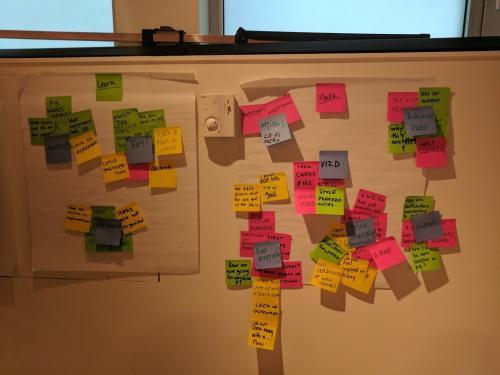
After identifying the key objectives for the week, we talked about the Archetypes and User Research, to make sure everyone present (and virtual!) had the background knowledge on who we’re designing for. We determined that we needed to write a third Archetype for people who would be maintaining the sites. We defined the Webby Archetype as:
A person who needs to publish on behalf of Greenpeace. Concerned about the consistency, accuracy and functionality of the website. They might be campaigners, storytellers, media officers, or developers. They want control as editors, instead of handing things off to other people to produce. Webbies should be able to follow guidelines to publish on behalf of GP.
Day 2: Find Opportunities and Brainstorm
The next morning, we set to work identifying the potential pain points of Greenpeace web presences for our various archetypes. We started by looking at what our archetypes might want to do. We used pre-defined scenarios, but also came up with some new ones using this:
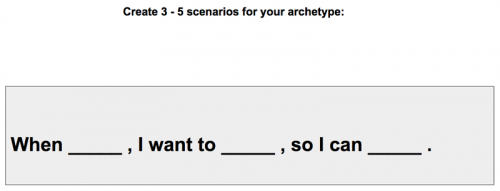
We broke into three groups, each with its own archetype. In those groups, we worked together to detail out current user journeys. Doing this helped us determine “Opportunity Spaces” – where could we improve the journeys? Check out the journeys we built for Stewards, Connected Evangelists and Webbies – we’ve highlighted the opportunities we saw.
We summarized the opportunity spaces we found.
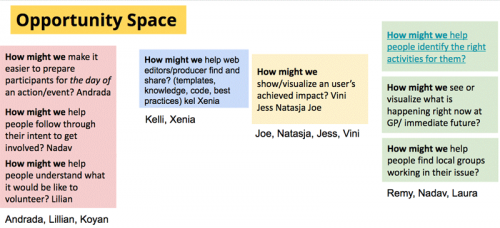
Then we broke into four brainstorming groups. Each group focused on an opportunity space, and tried to answer the key dilemma: “In relationship to each question, how can we push the limits of technology and give our users a new way to experience civic participation?” We used four design prompts to help us if we were feeling like we were running out of ideas. Those prompts are in slides 8 to 11.
This exercise produced hundreds of ideas. You can marvel at these ideas in Slides 12 to 18.
At the end of the day (and at various times throughout), we came together as a big group to share our thinking. We were pleased to see that though we were working in smaller groups, our ideas overlapped. This indicated that we were on the right track, thinking on behalf of our Archetypes and Greenpeace, rather than ourselves.
That evening, in our closing circle, there was a moment when participants surfaced a concern:the task of creating a new ecosystem of Greenpeace websites became, for a moment, completely overwhelming. Someone said, “Are we the right people to be doing this?”
This sentence hit me hard. The answer isn’t a simple yes or no. The reality is that we cannot do this alone, that we are relying on everyone to step up and help. We’re trying to change the way people think about activism, civic participation, their ecological footprint, the greater good. Of course we’re not the “right people”, we’re “some right people”. The other reality is that our group has been selected through skill or fate or sheer luck to start this process and pull it forward. We are, by way of circumstance, exactly the right people.
Day 3: Zoning in on Concept
The creative work continued on Wednesday. We kicked off the day with my favorite discussion technique, a Spectrogram. The idea was to allow the team to discuss our position in the organization and the ambitious task we had before us, to tackle concerns and challenges, before getting back to work.
After this, the four sub-teams clustered ideas from the previous day to identify no more than two overarching ideas and present those to the others. Combining a few similar ideas, we ended up with 6 potential concepts to work on, and proceeded with the voting, giving each participant three sticky dots to vote for the three concepts he/she most wanted to work on. Through this process, we narrowed the potential concepts to three overarching ideas. Our various drawings are here.
The next phase made us broke into three groups, allowing people to work on the idea/s that excited them the most. We did collaborative mind mapping around each idea, shared those maps with the larger group and finally sketched out components and flows using an exercise in which we had to draw 8 ideas in 8 minutes. Each participant went in their own direction. We surfaced a variety of interesting flows, components and cats:
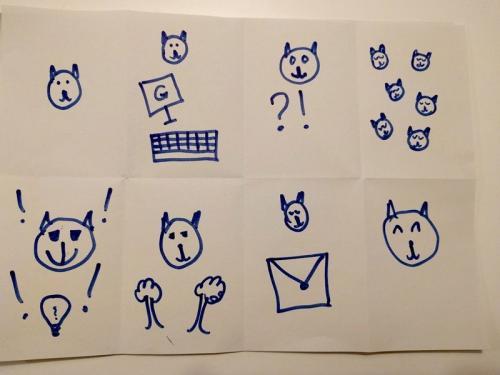
After such a creative morning, we decided to step back and look at what currently exists on Greenpeace websites across the globe. We documented current content types and talked about the pros and cons of each one. This helped us think not only about the new ideas, but how to integrate those with existing content.
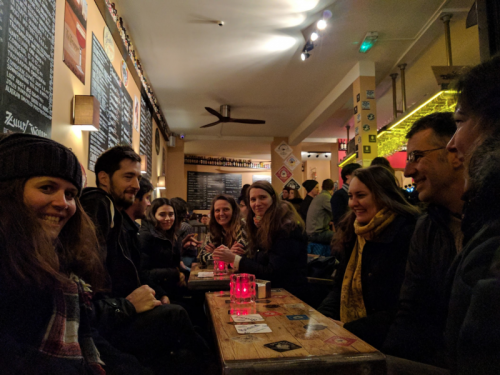
Day 4: Practicalities and Roadmapping
Free form independent and creative work kicked off our final day. Some people continued drawing wireframes and ideas. Others completed tasks that were quick and easy when people are in the same room together, such as prioritizing a feature list. Still others thought about technological implications. Some worked alone to process, draw or filter through ideas.
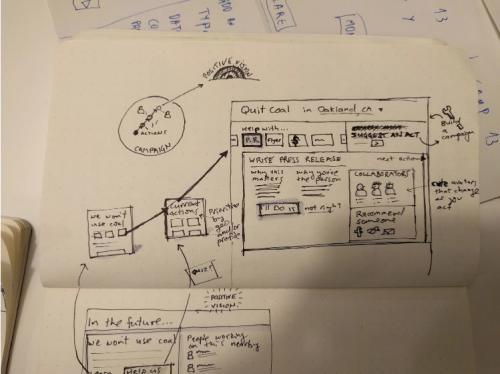
For the first hour or two after lunch, we worked in three groups. The designers hung out to figure out how to work together in the coming weeks. A resourcing conversation happened amongst several team members. The rest started discussing the strategy (in progress) for delivering the Planet 4 Creative Concept.
At this point, we had one more thing to do, a practical discussion about next steps. We sat around a big table and collaborated on a spreadsheet where we dumped in all the next steps we could think of. Over the coming weeks and months, these will become tasks in our two week sprint cycles.
The big what’s next
For the rest of February we will be fleshing out a concept to share with the community. This concept will be visually explained, but visualizations will be low fidelity. Our aim is to show a well thought out example of what Planet 4 could be. Then we will work together, with you, to refine, iterate and change our proposal into what Planet 4 will be.
For the rest of the month, we will be planning how you can give feedback. In March, we will offer special Q & A sessions and concept share outs. We will invite you to give your feedback. We have plenty to do, and we welcome and wish for your participation. Leave us comments, ask questions in the Planet 4 Mailing List or reach out to one of the team members. We will continue to update this Medium publication as we go along!